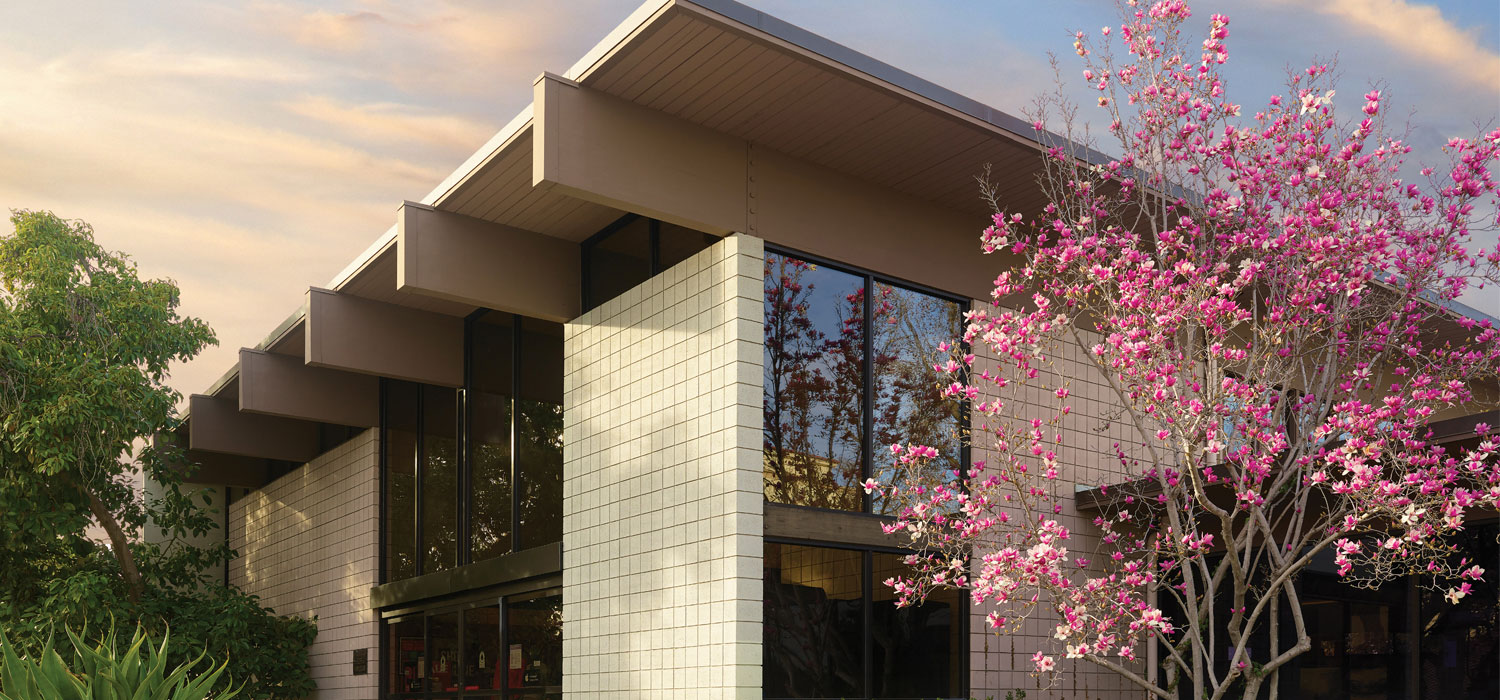Our Commitment
The Yuhaaviatam Center for Health Studies is a research hub and living laboratory for health and well-being that is unique in higher education.
Scholars across CGU are conducting innovative research on proactive and behavioral approaches to health in a variety of areas, including chronic disease management, prevention strategies, and health-driven technologies that provide accessibility to support networks and programs.
The 23,000 square-foot Yuhaaviatam Center, officially opened in May 2023, was made possible through a $14 million gift from the San Manuel Band of Mission Indians, which allowed the university to purchase the Huntley Bookstore property on the perimeter of the campus. Another gift from the tribe, along with gifts from Prime Healthcare and other supporters, helped fund renovations to the interior of the architecturally significant building, whose name, Yuhaaviatam, is a Serrano word meaning People of the Pines.
“The Yuhaaviatam Center for Health Studies is a wonderful example of partnership,” CGU President Len Jessup said about the transformational gifts. “I could not be more grateful to the San Manuel Band of Mission Indians and our other supporters for their belief in CGU’s commitment to make a difference in the world. The center will benefit our faculty and students, but most important, it will expand their ability to improve lives, especially in communities that need it most.”
CGU collaborates with more than 300 health-related organizations to improve the quality of life, especially in communities most in need. Our goal is to provide powerful, impactful solutions to seemingly intractable challenges.
Our Center
Scholars across CGU’s seven schools and divisions are conducting innovative research on proactive and behavioral approaches to health in a variety of areas, including prevention strategies, chronic disease management, and health-driven technologies that provide accessibility to support networks and programs.
Loading...
All of these efforts come together in a 23,000 square-foot facility at the southeast corner of the university campus that served for 50 years as The Claremont Colleges’ central bookstore. Once renovations are completed, the center will house CGU’s School of Community & Global Health as its anchor tenant.
Our Advantage
Complex issues demand approaches that transcend discrete fields. At CGU, we call this transdisciplinarity, and it is at the heart of our educational model. Transdisciplinarity has been embedded in our DNA since our founding in 1925. It involves taking on complex problems important to society and including diverse stakeholders to find a resolution. This is what we are doing at the Yuhaaviatam Center.
Here are just a few examples of how our experts have already made a difference:
Health-Driven Technology
The emerging interdisciplinary research field of Persuasive Technology, focused on how interactive technologies and services can support positive behavior change, holds great promise for improving and extending lives. Professor Samir Chatterjee’s MyHeart app, for example, helps patients by collecting diagnostic data and other feedback on a daily basis that is monitored remotely by hospital caregivers, who can determine whether intervention is needed.
Proactive Health Management
Research across CGU is addressing root causes of chronic diseases such as cancer, diabetes, and obesity, as well as disease management and follow-up care. “Diseases of despair”—drug addiction, depression, and suicide, among others—are reducing life expectancy, especially in underserved communities. Faculty are studying a range of holistic approaches and interventions that pay particular attention to the needs of these communities.
Healthcare Policy
Understanding the government labyrinth— what makes a policy effective or ineffective— can improve social and economic outcomes. Professors in the School of Social Science, Policy & Evaluation are studying the relationship between social justice and well-being, and research in the Division of Politics and Economics is focusing on the efficacy of federal health programs such as the Affordable Care Act and Medicaid managed care.
Mindfulness
CGU is a leader in the field of Positive Health Psychology, which explores how to maintain physical and mental well-being despite the presence of otherwise harmful physical, social, or environmental conditions. The Adolescent Moral Development Lab is addressing questions around purpose and gratitude, with a focus on youth growing up in poorly resourced communities.
Loading...
